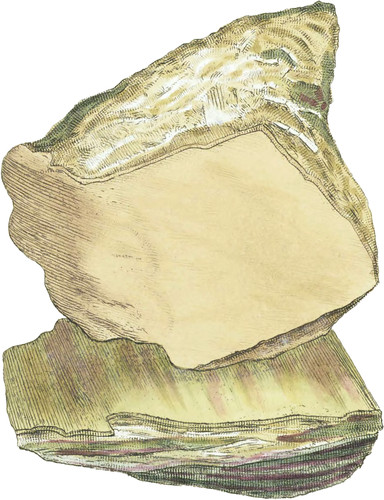 Enlarge
Enlarge
British Mineralogy
Talc
This beautiful variety I found in the fine Serpentine rocks at the Lizard Point in 1799: as I do not know that it has been before noticed, and as it is not common I am glad to shew it to the learned world, it is accompanied with hardish plates of Steatite and Serpentine; the former somewhat resembling dark coloured Ivory, as in the upper figure; the lower specimen bears more resemblance to the steatitic substance formerly imported under the nane of French Chalk, and used for absorbing grease from silks, &c.: the Serpentine about it is approaching to fibrous. The Tale forms a layer between the Steatite and Serpentine; its laminæ are perpendicular to the surfaces of the layer, and are very long; they are also striated transversely, which gives them a little of the appearance of the Asbestos in veins in Serpentine, from Wales, (see tab. 123). I have one specimen from Portsoy; in it the laminæ require to be examined with a lense to he distinctly seen.
At first I was led by the difference of form from that generally assumed by Talc, to suspect I had discovered Hydrate of Magnesia; but the precision of Dr. Wollaston, who examined a fragment I sent, to him, shews it to be Tale, for he found it to consist essentially of Silicate of Magnesia. The Doctor believes the peculiarity of the fracture to be owing rather to the circumstance of the mechanical compression, to which it has been subjected, than to any thing unusual in the composition.
The rich silky or satiny appearance in the specimens attracts the eye, but is not to he so perfectly expressed as I could wish.

